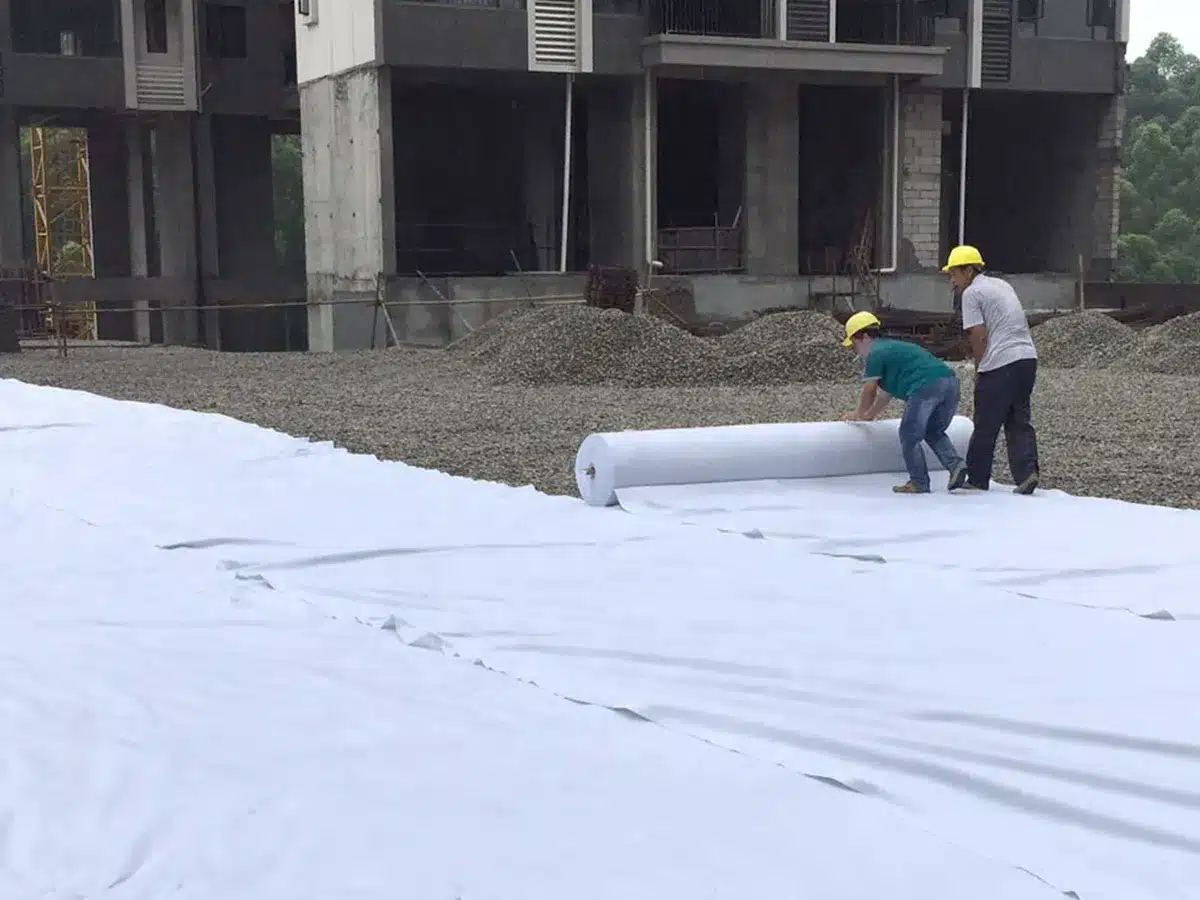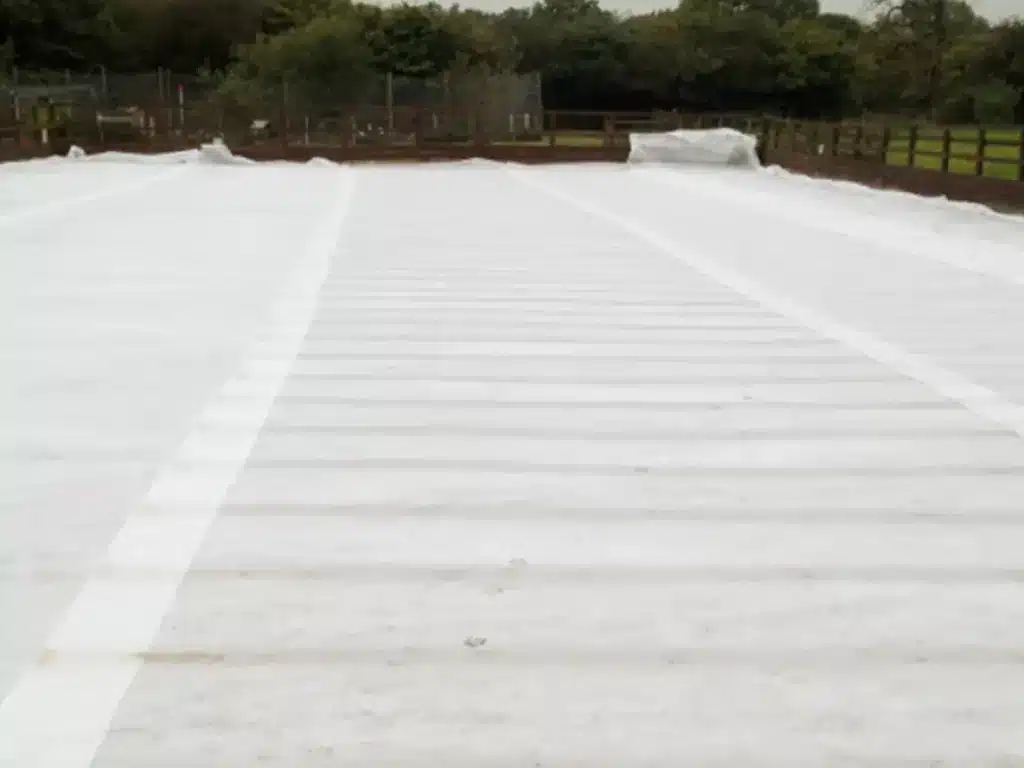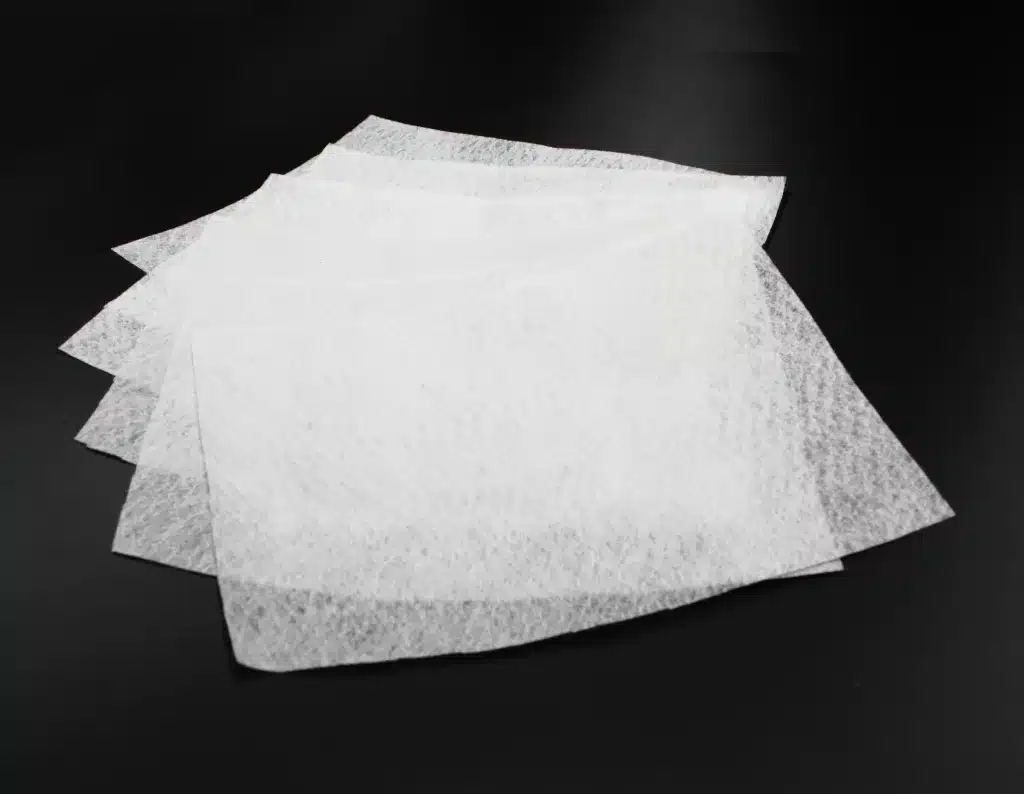+86-159 9860 6917
info@geofantex.com
geofantex@gmail.com
+86-400-8266163-44899
Geotextiles are a critical component in modern civil engineering, particularly in the construction of drainage retaining walls. These versatile materials enhance soil stability, provide effective drainage, and prevent erosion. In this article, we explore the use of geotextiles in retaining walls, their drainage capabilities, and their essential functions in waterproofing and construction projects.
What is the use of geotextile in retaining walls?
Geotextiles are widely used in retaining walls to enhance their stability and longevity. Here are the primary uses of geotextile in retaining walls:
- Separation: Geotextiles act as a separator between different layers of soil, preventing the mixing of dissimilar materials, which could compromise the structure’s integrity. This is crucial in retaining walls, where the backfill and native soils need to remain distinct to ensure proper drainage and load distribution.
- Filtration: Geotextiles provide filtration by allowing water to pass through while preventing soil particles from being washed away. Retaining walls is vital for preventing soil erosion and maintaining the wall’s stability over time.
- Drainage: Geotextiles are often used as part of the drainage system in retaining walls. They facilitate the movement of water away from the wall, reducing hydrostatic pressure that can cause the wall to fail.
- Reinforcement: In some cases, geotextiles reinforce the soil behind the retaining wall, providing additional tensile strength. This reinforcement helps to distribute loads more evenly and enhances the overall stability of the wall.
Using geotextiles in retaining walls ensures that the wall remains structurally sound, effectively manages water, and resists the pressures exerted by the soil over time.

Does water drain through geotextile?
Yes, water can drain through geotextile fabric, but the extent to which it does depends on the type of geotextile used. Geotextiles are designed to allow water to pass through while retaining soil particles, which makes them effective for filtration and drainage purposes. Here’s how it works:
- Non-Woven Geotextiles: These geotextiles are made from a network of fibers that are randomly arranged and bonded together. They have high permeability, which allows water to flow through them easily. Non-woven geotextiles are commonly used in drainage applications, such as in retaining walls, where water needs to be directed away from the structure.
- Woven Geotextiles: These are made by weaving fibers together, creating a strong and durable fabric. Woven geotextiles have lower permeability compared to non-woven types, but they still allow water to pass through, albeit at a slower rate. They are often used where reinforcement is needed, and drainage is a secondary concern.
In retaining walls and other similar applications, geotextiles are used to ensure that water can escape from the soil while preventing soil particles from being carried away, which helps maintain the stability of the structure.
What is the function of drainage geotextiles?
Drainage geotextiles are specialized fabrics used in geotechnical engineering to facilitate the movement of water while preventing the migration of soil particles. Their primary functions include:
- Water Drainage: These geotextiles allow water to pass through them while preventing soil particles from washing away. They create a pathway for water to flow through, helping to manage groundwater and surface water in construction or civil engineering projects.
- Soil Filtration: By acting as a filter, drainage geotextiles prevent the clogging of drainage systems. They separate soil from water, allowing water to flow freely while retaining soil particles, which can help maintain the stability of the ground.
- Erosion Control: In areas where erosion is a concern (such as slopes, embankments, or shorelines), drainage geotextiles provide reinforcement and support, preventing the loss of soil due to water movement. This helps in preserving the integrity of the surrounding landscape.
- Separation and Reinforcement: In addition to drainage, these geotextiles can be used to separate different soil layers (such as sand from fine-grained soils) to improve the structural integrity of roads, foundations, or retaining walls. They can also provide added reinforcement to the soil structure, increasing the lifespan of the drainage system.
- Support for Pavement and Road Structures: Drainage geotextiles are commonly used under roadways and pavement structures to improve drainage, reduce the risk of water infiltration, and prevent the weakening of the road base, which could otherwise lead to structural failure.
Overall, drainage geotextiles play an essential role in ensuring proper drainage, soil stabilization, and erosion control in construction, landscaping, and environmental engineering projects.
Why is geotextile used in waterproofing?
Geotextiles are used in waterproofing due to their ability to act as a barrier against water infiltration while providing drainage and filtration. It is highly durable and water-resistant. In waterproofing applications, geotextiles are often combined with other materials to create a comprehensive waterproofing system. Their permeability allows for the controlled passage of water, which helps manage moisture levels and prevent water from penetrating the protected structure. This makes geotextiles an essential component in various waterproofing scenarios, from foundations and basements to retaining walls and roofing systems.
Geotextiles are indispensable in the construction of drainage retaining walls, offering reinforcement, filtration, and drainage capabilities. By allowing water to pass through while retaining soil particles, these materials help manage water flow, reduce hydrostatic pressure, and prevent soil erosion. Additionally, geotextiles play a vital role in waterproofing applications, providing a barrier against water infiltration and ensuring the longevity and stability of structures. As construction technology advances, the use of geotextiles continues to expand, underscoring their importance in modern civil engineering.



Get Free Sample
We’ll respond as soon as possible(within 12 hours)






















